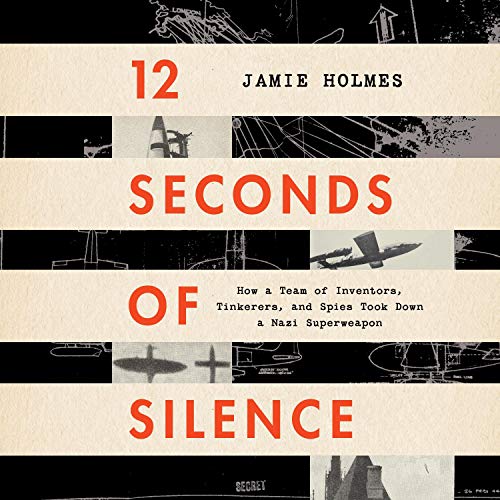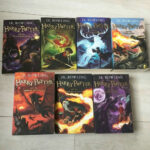Click to rate this post!
[Total: 0 Average: 0]
12 Seconds of Silence audiobook
Hi, are you looking for 12 Seconds of Silence audiobook? If yes, you are in the right place! ✅ scroll down to Audio player section bellow, you will find the audio of this book. Right below are top 5 reviews and comments from audiences for this book. Hope you love it!!!.

Review #1
12 Seconds of Silence audiobook free
You cant help knowing that the atomic bomb was a product of World War II and greatly influenced its outcome. If youve read a little, youre aware that radar played a decisive role in the war as well, implemented both in the air, at sea, and on land. But its less likely youve heard about a third technological breakthrough that many military analysts and historians believe was equally important. Its called the proximity fuse. Known as the worlds first smart weapon, the proximity fuse (or fuze) was a five-pound marvel of engineering, industry, and can-do spirit. And its development and deployment is the subject of Jamie Holmes impressive if idiosyncratic book, 12 Seconds of Silence. This WWII technology breakthrough saved thousands of lives Holmes book brings to the fore the role of the proximity fuse in defeating the first of the Nazi superweapons to surface: the V-1 buzz bomb. But the device had far broader applications and played a pivotal role in turning back the German advance in the Battle of the Philippine Sea (June 19-20, 1944) and the Battle of the Bulge (December 16, 1944 to January 25, 1945) as well. Heres why the fuse was needed and how it worked: ** In the early weeks of the Blitz, the ratio of fired [artillery] shells to downed aircrafta metric described in RPB, or rounds per birdwas twenty thousand to one. In other words, antiaircraft guns brought down Nazi planes only by the sheerest luck. ** The challenge, then, was to design and produce a gadget that would detonate an artillery shell only within striking distance of an attacking aircraftnot by hitting it directly but by exploding just closely enough for shrapnel to tear the plane apart. American and British scientists and engineers approached this challenge by test2ing a wide range of options. And the Americans found the one technological fix that proved to work. ** A micro-transmitter in the proximity fuse within the shell uses the shells body as an antenna and emits a continuous radio wave. As the shell approaches a reflecting object, the wave bouncing back triggers the detonation when it signals having reached an optimal distance from the target. Bureaucratic hurdles and brickbats blocked this WWII technology breakthrough The proximity fuse resulted from the work of a team of American scientists and engineers known as Section T led by physicist Merle Tuve. Holmes vividly relates the bureaucratic hurdles and brickbats that Tuve and his lieutenants suffered throughout the development of the fuse. The frustrations were constant amid the chaos of the American military establishment during the war and distractions from an unsuccessful parallel effort undertaken by the British. But the resistance didnt end even after the fuse had been battle-test2ed and proven to be a godsend. When Section T delivered fuses to the Navy in the Pacific, [s]ome gunners flatly refused to use the new ammunition, and it took weeks for the new technology to be widely adopted. The same happened on the other side of the world. To the British, the American device remained an unproven technology reflecting what might be characterized as the not-invented-here syndrome. And [E]ven if the British had wanted to use Section T fuses [to defend London], they couldnt because they were prohibited from using it over land. The device was one of the most closely guarded secrets of the war, and military officials feared a downed fuse might somehow make its way to the Nazis. The resistance broke only when Winston Churchill personally intervened to order the gadgets deployment in the battle against the V-1. Astonishing results once the military fully deployed the new technology Once British artillery was rushed to Englands southern coast and the ammunition equipped with the fuses, the impact was dramatic. During the two-and-a-half month period when the buzz bombs fell, British artillery succeeded in bringing down just 9% of the V-1s attacking London to 97% once the device was fully deployed and gunners experienced in using it. During most of the time since World War II, articles and books written about the proximity fuseand thereve been manyhave claimed that British technicians invented the device and passed it along to the Americans for production. Thats simply not true, and 12 Seconds of Silence corrects the record based on exhaustive historical research. Section T was a group of American scientists and engineers in one department of the U.S. Office of Scientific Research and Development, and it was they who were truly responsible for designing and building the gadget. A large cast of colorful characters Theres a large cast of compelling characters in this book, including several of the scientists and inventors in Section T whose later careers highlighted their brilliance. But Holmes story centers on just a handful of individuals: ** Merle Tuve (1901-82), the brilliant and short-tempered physicist who gave his name to Section T, driving a team that ultimately numbered more than a thousand scientists, engineers, and support staff ** Vannevar (sounds like achiever) Bush (1890-1974), who headed the U.S. Office of Scientific Research and Development (OSRD), the massive American military R&D enterprise in World War II that developed over two hundred new weapons and devices ** Col. Max Wachtel, the German army officer who managed the Nazis dreaded V-1 Vengeance-Weapon program ** R. V. Jones (1911-97), who spearheaded scientific espionage for the British and (sometimes) reported directly to Winston Churchill ** Private Edward (Ed) Hatch, an American soldier in the 130th Chemical Processing Company who was on the receiving end of the V-1 explosion in London that took the lives of 74 US soldiers; Hatchs unit had been rushed to London because the British military leadership feared that the expected onslaught of V-1 rockets would carry chemical or biological warheads ** Jeannie Rousseau (1919-2017), the beautiful young French spy who gathered extensive knowledge about the German superweapon development program at Peenemnde and sent it through Resistance channels to MI6 in London A book thats about a lot more than a WWII technology breakthrough Ive referred to this book as idiosyncratic. Thats because Holmes account wanders over a wide swath of World War II history. Its crammed with digressionsmany of them fascinating, to be sure, but largely peripheral to the story of the proximity fuse and its deployment against the V-1. If Holmes had stuck to the story, he would not have provided such rich detail about the French Resistance, the Normandy landings, and the training of the 130th Chemical Processing Company in the US and their experience in London. This book would have been both shorter . . . and much less entertaining.
Review #2
12 Seconds of Silence audiobook streamming online
Lots of people have read about the Manhattan project, but the subject of this book has largely stayed unknown, and arguably had more of an impact on the war than the atomic bomb. Great mix of technical details which I loved, and the personalities involved as well. Great for both history and technology buffs.
Review #3
Audiobook 12 Seconds of Silence by Jamie Holmes
Twelve Second s of Silence tells the history of the development of the proximity fuse. This dude was critical in improving the shoot down rate in the Pacific and in England. It\’s role in countering the V1 attacks on London in the summer of 1944 is amazing.
Review #4
Audio 12 Seconds of Silence narrated by Chris Mayers
Many amazing things were accomplished by the Allies during WW2. This book was about one of those. Imagine the challenge of creating a radar-like fuse for artillery shells containing several vacuum tubes that could withstand the 20,000 G forces when the shell is fired! This was an important development, and it was damn lucky for the Allies that the Germans and Japanese were unable to do it. A good historical story about an interesting challenge.
Review #5
Free audio 12 Seconds of Silence – in the audio player below
A very well written and interesting explanation of the development of the proximity fuse during 1940-1944 timeframe. What makes this book a must read is that the author skillfully weaves battle stories in the Pacific and European theatre around the development of the fuse, and illustrates how it helped (or didn\’t before development) the Allied battle success. I\’m a WW2 history buff but learned quite a bit about not only the fuse, but related stories as well, including the V1 buzzbomb attacks and the use of the fuse during the Battle of the Bulge. A quick and very interesting read; well researched; I recommend it.
Recommend Books
Audiobook09 player
If the audio player does not work, please report to us, we will fix it as soon as possible (scroll up a little you will find the "REPORT CONTENT" button).












0 Comments: